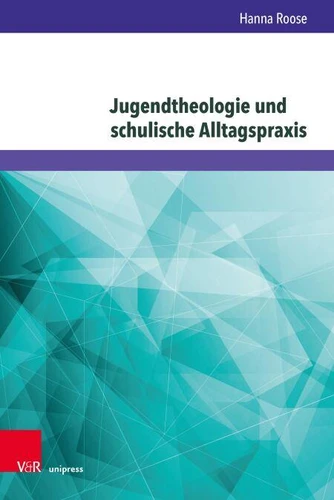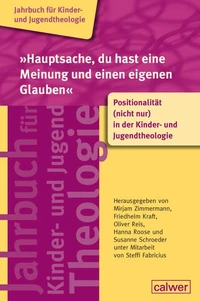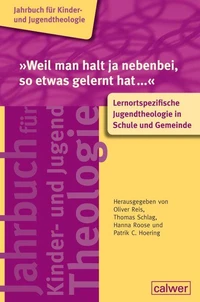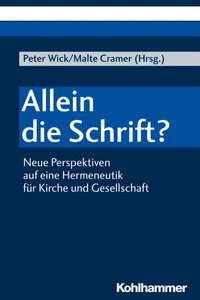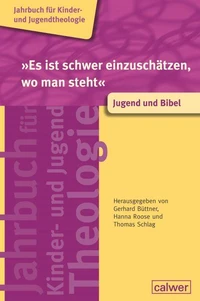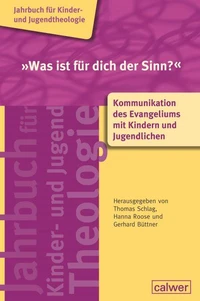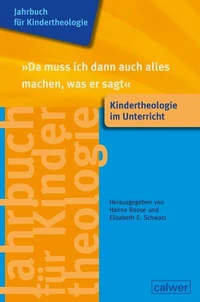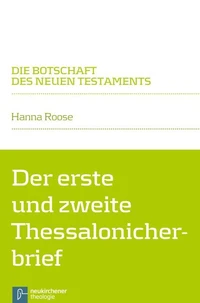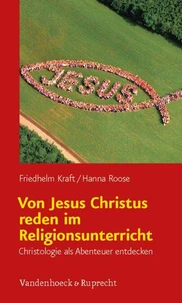Nouveauté
Jugendtheologie und schulische Alltagspraxis. Eine rekonstruktive Studie zum Verhältnis von jugendtheologischen Normen und der Normativität religionsunterrichtlicher Alltagspraxis
Par :Formats :
Disponible dans votre compte client Decitre ou Furet du Nord dès validation de votre commande. Le format PDF est :
- Compatible avec une lecture sur My Vivlio (smartphone, tablette, ordinateur)
- Compatible avec une lecture sur liseuses Vivlio
- Pour les liseuses autres que Vivlio, vous devez utiliser le logiciel Adobe Digital Edition. Non compatible avec la lecture sur les liseuses Kindle, Remarkable et Sony
 , qui est-ce ?
, qui est-ce ?Notre partenaire de plateforme de lecture numérique où vous retrouverez l'ensemble de vos ebooks gratuitement
Pour en savoir plus sur nos ebooks, consultez notre aide en ligne ici
- Nombre de pages309
- FormatPDF
- ISBN978-3-8470-1863-6
- EAN9783847018636
- Date de parution13/10/2025
- Protection num.pas de protection
- Taille3 Mo
- Infos supplémentairespdf
- ÉditeurV&R Unipress
Résumé
Hanna Roose bearbeitet in dieser rekonstruktiven Studie die oft wahrgenommene Kluft zwischen ( »praxisfernen« ) religionsdidaktischen Vorstellungen »guten« Unterrichts und ( »schlechter« ) unterrichtlicher Alltagspraxis. Sie betrachtet dazu Unterricht als kulturelle Praxis. An die Stelle der Frage >Was will und kann die Lehrkraft?< rückt die Frage >Was passiert im Unterricht?<. Unterricht zeigt sich nicht als Vakuum, das die Lehrkraft nach ihrem Wollen und Können ausgestaltet, sondern als Ordnung mit eigenen Regelhaftigkeiten.
Die Studie fragt, welche Regeln und Normen in unterrichtlicher Alltagspraxis sichtbar werden, und setzt jugendtheologische Erwartungen in ein differenziertes Verhältnis zur Normativität unterrichtlicher Alltagspraxis. Sie zeigt, inwiefern sich Jugendtheologie an der Grenze von Unterricht bewegt. Hanna Roose deals in this the reconstructive study with the often perceived gap between ("non-practical") religious didactic ideas of "good" teaching and ("bad") everyday teaching practice.
It looks at teaching as a cultural practice. The question 'What does the teacher want and what can s/he do?' is replaced by the question 'What happens in the classroom?'. Classroom teaching is not a vacuum that teachers shape according to their will and ability, but rather an order with its own rules. The study asks which rules and norms become visible in everyday teaching practice and places expectations of youth theology in a differentiated relationship to the normativity of everyday teaching practice.
It shows the extent to which youth theology operates at the boundaries of teaching.
Die Studie fragt, welche Regeln und Normen in unterrichtlicher Alltagspraxis sichtbar werden, und setzt jugendtheologische Erwartungen in ein differenziertes Verhältnis zur Normativität unterrichtlicher Alltagspraxis. Sie zeigt, inwiefern sich Jugendtheologie an der Grenze von Unterricht bewegt. Hanna Roose deals in this the reconstructive study with the often perceived gap between ("non-practical") religious didactic ideas of "good" teaching and ("bad") everyday teaching practice.
It looks at teaching as a cultural practice. The question 'What does the teacher want and what can s/he do?' is replaced by the question 'What happens in the classroom?'. Classroom teaching is not a vacuum that teachers shape according to their will and ability, but rather an order with its own rules. The study asks which rules and norms become visible in everyday teaching practice and places expectations of youth theology in a differentiated relationship to the normativity of everyday teaching practice.
It shows the extent to which youth theology operates at the boundaries of teaching.
Hanna Roose bearbeitet in dieser rekonstruktiven Studie die oft wahrgenommene Kluft zwischen ( »praxisfernen« ) religionsdidaktischen Vorstellungen »guten« Unterrichts und ( »schlechter« ) unterrichtlicher Alltagspraxis. Sie betrachtet dazu Unterricht als kulturelle Praxis. An die Stelle der Frage >Was will und kann die Lehrkraft?< rückt die Frage >Was passiert im Unterricht?<. Unterricht zeigt sich nicht als Vakuum, das die Lehrkraft nach ihrem Wollen und Können ausgestaltet, sondern als Ordnung mit eigenen Regelhaftigkeiten.
Die Studie fragt, welche Regeln und Normen in unterrichtlicher Alltagspraxis sichtbar werden, und setzt jugendtheologische Erwartungen in ein differenziertes Verhältnis zur Normativität unterrichtlicher Alltagspraxis. Sie zeigt, inwiefern sich Jugendtheologie an der Grenze von Unterricht bewegt. Hanna Roose deals in this the reconstructive study with the often perceived gap between ("non-practical") religious didactic ideas of "good" teaching and ("bad") everyday teaching practice.
It looks at teaching as a cultural practice. The question 'What does the teacher want and what can s/he do?' is replaced by the question 'What happens in the classroom?'. Classroom teaching is not a vacuum that teachers shape according to their will and ability, but rather an order with its own rules. The study asks which rules and norms become visible in everyday teaching practice and places expectations of youth theology in a differentiated relationship to the normativity of everyday teaching practice.
It shows the extent to which youth theology operates at the boundaries of teaching.
Die Studie fragt, welche Regeln und Normen in unterrichtlicher Alltagspraxis sichtbar werden, und setzt jugendtheologische Erwartungen in ein differenziertes Verhältnis zur Normativität unterrichtlicher Alltagspraxis. Sie zeigt, inwiefern sich Jugendtheologie an der Grenze von Unterricht bewegt. Hanna Roose deals in this the reconstructive study with the often perceived gap between ("non-practical") religious didactic ideas of "good" teaching and ("bad") everyday teaching practice.
It looks at teaching as a cultural practice. The question 'What does the teacher want and what can s/he do?' is replaced by the question 'What happens in the classroom?'. Classroom teaching is not a vacuum that teachers shape according to their will and ability, but rather an order with its own rules. The study asks which rules and norms become visible in everyday teaching practice and places expectations of youth theology in a differentiated relationship to the normativity of everyday teaching practice.
It shows the extent to which youth theology operates at the boundaries of teaching.

